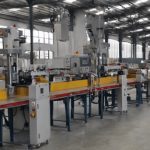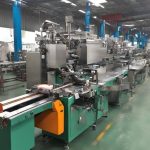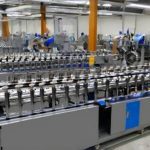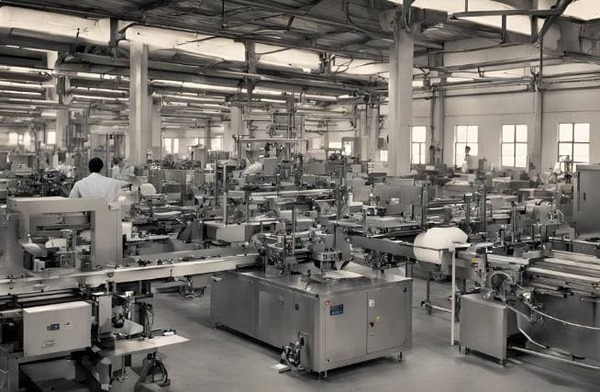
Introduction
The packaging of cooking oil plays a crucial role in preserving its quality, extending its shelf life, and ensuring safe transportation. With the global market for edible oils expanding, manufacturers are continuously exploring packaging options that not only maintain product integrity but also appeal to consumers aesthetically. This article delves into the various packaging materials and technologies available for cooking oil, analyzing their benefits and drawbacks to determine the most effective solution.
One of the significant considerations in packaging is the machinery used in the process. Advanced equipment like the bleaching powder packing machine has revolutionized the efficiency and precision of packaging operations. While primarily used for powders, understanding such machinery’s principles can inform innovations in oil packaging as well.
Glass Bottles
Glass has been a traditional choice for cooking oil packaging for decades. Its impermeability to gases and vapors makes it an excellent barrier against oxygen, which can oxidize oils and degrade their quality. Glass packaging also does not interact chemically with the oil, ensuring the product’s purity remains unaltered.
Despite these advantages, glass bottles are heavy and fragile, increasing transportation costs and the risk of breakage. From an environmental perspective, although glass is recyclable, the energy required to produce and recycle glass is substantial. Furthermore, the transparency of glass allows light to penetrate, which can accelerate the oxidation process unless the bottles are tinted.
Plastic Containers
Plastic containers, particularly those made from polyethylene terephthalate (PET), have gained popularity due to their lightweight nature and resistance to shattering. They offer flexibility in design, allowing for ergonomic shapes that enhance consumer convenience. Additionally, plastics can be treated to provide barriers against oxygen and light.
However, concerns regarding plastic leaching chemicals into the oil, especially under high temperatures or prolonged storage, have been raised. Environmental issues also come into play, as plastics contribute significantly to pollution if not properly recycled. Innovations in biodegradable plastics are emerging, but their widespread adoption is still limited by cost and performance factors.
Metal Cans
Metal cans, typically made from tin-plated steel or aluminum, offer excellent protection against light and oxygen. They are durable and stackable, making them ideal for bulk storage and transportation. Metal packaging can also withstand harsh handling conditions without compromising the oil’s integrity.
On the downside, metal cans are generally more expensive than other packaging options. They can also impart a metallic taste to the oil if the internal lining is compromised. Innovations in metal packaging focus on improving internal coatings to prevent any interaction between the oil and the metal surface.
Bag-in-Box Systems
Bag-in-box packaging consists of a flexible, multi-layered bag placed inside a rigid or semi-rigid box. This system offers significant advantages in terms of extended shelf life, as the collapsible bag minimizes air contact with the oil as it is dispensed. The outer box provides protection and allows for attractive branding opportunities.
This type of packaging is particularly suited for foodservice industries and bulk consumers. However, the complexity of the packaging materials, involving various plastic layers and cardboard, can make recycling challenging. The initial setup costs for specialized filling equipment might also be higher compared to traditional methods.
Pouch Packaging
Flexible pouches made from laminated films are an emerging trend in cooking oil packaging. They are lightweight, require less storage space, and reduce transportation costs due to their minimal weight and volume. Pouches can be designed with spouts and handles for easy pouring and resealing.
Despite these benefits, pouches offer less protection against physical damage compared to rigid containers. They also rely heavily on multi-layer plastics that are difficult to recycle. Advances in material science are focusing on developing mono-material pouches that can be more readily recycled, addressing environmental concerns.
Sustainability Considerations
With increasing consumer awareness about environmental impact, sustainability has become a pivotal factor in packaging decisions. Manufacturers are exploring biodegradable materials and reusable packaging options. For instance, some companies are introducing returnable glass bottles with deposit schemes to encourage recycling.
Lifecycle assessments have shown that the total environmental impact of packaging depends on various factors, including raw material extraction, production processes, transportation, and end-of-life disposal. In this context, the use of advanced machinery like the bleaching powder packing machine can improve efficiency and reduce waste during the packaging process.
Food Safety and Regulatory Compliance
Packaging materials for cooking oil must comply with food safety regulations to ensure they do not contaminate the product. Materials must be approved for food contact, and manufacturers must adhere to Good Manufacturing Practices (GMP). Migration tests are conducted to ensure that no harmful substances leach into the oil.
In addition, labeling requirements mandate that packaging provides accurate information about the product. Innovations in smart packaging are emerging, where QR codes and interactive labels offer consumers detailed product information, origin tracing, and even recipes.
Consumer Preference and Market Trends
Consumer preferences significantly influence packaging choices. There is a growing demand for convenient, easy-to-use packaging that also conveys a premium image. Transparent packaging allows consumers to see the product, which can enhance trust and perceived quality.
Moreover, the rise of e-commerce has shifted packaging requirements towards more durable and tamper-evident solutions. Manufacturers must balance aesthetics with functionality to cater to online shoppers who expect products to arrive in perfect condition.
Technological Innovations in Packaging Machinery
Advancements in packaging machinery have enabled more efficient and precise packaging processes. Modern machines offer automation, reducing labor costs and increasing throughput. For example, the integration of the bleaching powder packing machine principles into oil packaging can enhance accuracy in filling and sealing.
Robotics and AI are increasingly being utilized for quality control, detecting defects in packaging, and ensuring consistency. Smart machinery also provides data analytics, helping manufacturers optimize their operations and reduce waste.
Cost Analysis
Cost is a critical factor when selecting packaging materials and technologies. While glass and metal may offer superior protection, their higher costs can affect the product’s competitiveness in price-sensitive markets. Plastics and pouches offer cost savings but may require investment in specialized equipment.
Investment in advanced machinery, such as automated packing and sealing machines, can have a high initial cost but may result in long-term savings through increased efficiency and reduced labor expenses. The bleaching powder packing machine is an example of equipment that, while designed for powders, offers insights into high-speed, precise filling mechanisms that could be adapted for liquids.
Environmental Regulations and Compliance
Governments worldwide are implementing stricter regulations on packaging, particularly concerning environmental impact. This includes mandates on recyclable materials, reduction of single-use plastics, and extended producer responsibility schemes where manufacturers are accountable for the end-of-life disposal of packaging.
Compliance with these regulations may require significant changes in packaging strategies. Adopting eco-friendly materials or redesigning packaging to minimize waste can also serve as a marketing advantage, appealing to environmentally conscious consumers.
Conclusion
Selecting the best packaging for cooking oil involves a complex evaluation of material properties, consumer preferences, cost considerations, and environmental impact. Glass, plastic, metal, bag-in-box systems, and pouches each offer distinct advantages and limitations. Advances in packaging machinery, such as those demonstrated by the bleaching powder packing machine, are facilitating more efficient and sustainable packaging solutions.
Ultimately, the optimal packaging choice may be a hybrid approach that leverages the strengths of various materials and technologies. Manufacturers must stay abreast of industry trends, technological advancements, and regulatory changes to make informed decisions that align with their business objectives and meet consumer needs.





